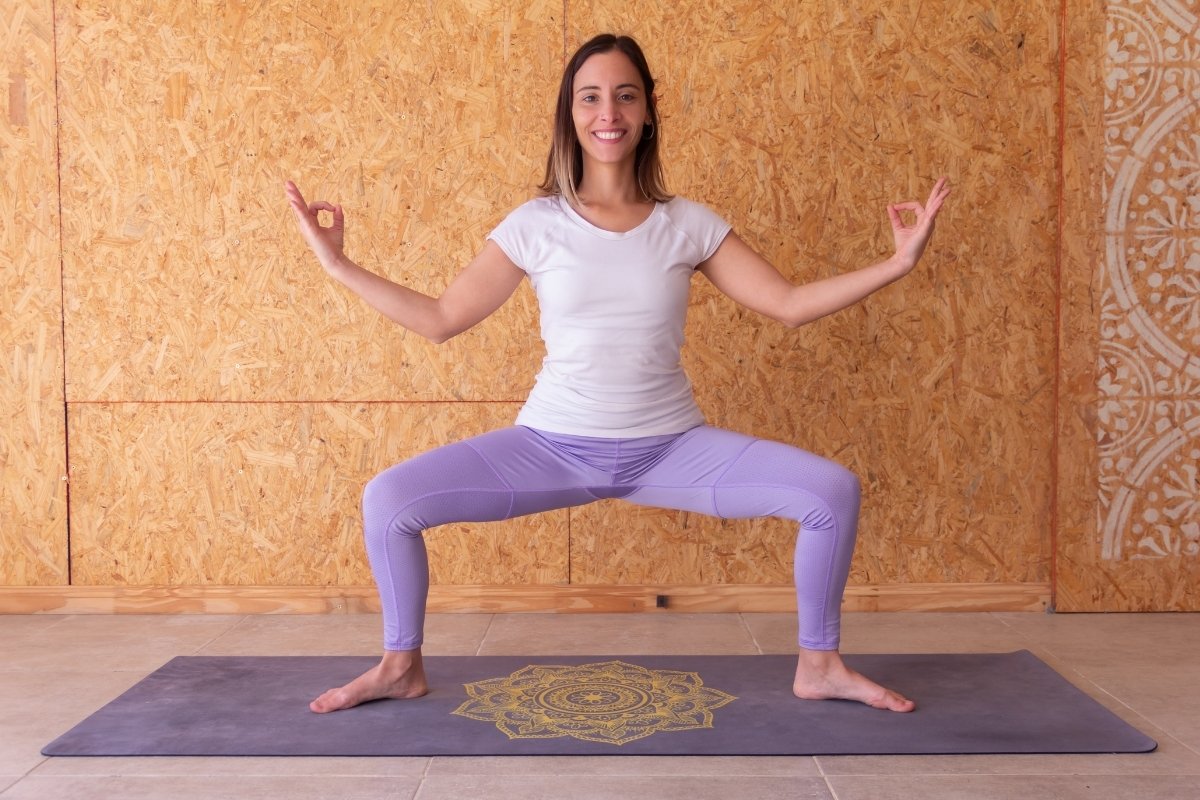Picture this: you step into your yoga class, mat in hand, surrounded by students ready for the journey you’re about to guide them through.
The energy in the room varies—some students are energized, others look like they’ve just survived the longest day ever. Your role isn’t just about calling poses; it’s about setting the tone, creating focus, and leaving your students with something meaningful to take off the mat.
That’s where the magic of yoga intentions comes in.
Yoga intentions are like the secret sauce that transforms a good class into a great one. They provide purpose and direction, making each class unique and memorable.
But not all yoga intentions fit all classes. Crafting yoga intentions tailored to the type of class you’re teaching and the needs of your students is where the real art lies.
Let’s dive into how you can create yoga yoga intentions that resonate with every class type.
Why Aligning Intentions with Class Types Matters
Here’s the thing: not all yoga classes are created equal. A slow, meditative restorative class has a very different vibe than a sweat-dripping power yoga session. And the students in those classes? They’re likely coming in with different needs and expectations.
Matching your yoga intention to the class type helps create a cohesive experience. It’s like pairing the right soundtrack to a movie scene—you wouldn’t play a dramatic symphony during a lighthearted comedy, right? A well-chosen yoga intention amplifies the energy of the class, makes the practice feel more connected, and leaves your students feeling seen and understood.
Understanding Student Needs and Class Energy

Let’s start with your students. What brings them to your class? Are they seeking stress relief, strength, or maybe just some quiet me-time? Tuning into their needs is the first step to creating a meaningful yoga intention.
- Morning Classes: Students might be looking for energy and focus to start their day. Think yoga intentions like, “Let’s cultivate clarity and purpose for the day ahead.”
- Evening Classes: Here, students might need grounding and relaxation. An yoga intention like, “Let’s release the day and find peace in this moment,” can resonate.
Take a moment before class to observe the room. Are your students chatting and energized? Or do they look like they’re one deep breath away from falling asleep? Match your yoga intention to the collective vibe.
Tailoring Intentions to Class Types
Every yoga class has its own flavor, and your yoga intention should complement it. Here’s how you can align yoga intentions with different class styles:
- Restorative or Yin Yoga
- These classes are all about slowing down, finding stillness, and embracing deep rest. Your yoga intention should mirror this sense of calm.
- Themes: Letting go, self-compassion, healing.
- Sample Intention: “Today, we honor stillness and the power of rest.”
- Why It Works: Students often come to restorative classes to recharge. A soothing yoga intention sets the tone for deep relaxation.
- Vinyasa or Flow Classes
- Flow classes are dynamic and often focus on the connection between breath and movement. Intentions here should inspire mindfulness and presence.
- Themes: Flow, presence, and adaptability.
- Sample Intention: “Let’s move with purpose, flowing like water through each transition.”
- Why It Works: These classes are a moving meditation, and a fluid yoga intention helps students stay present in their practice.
- Power Yoga or Strength-Focused Classes
- Power yoga is about building heat, strength, and resilience. Your yoga intention should motivate and empower your students.
- Themes: Inner strength, resilience, empowerment.
- Sample Intention: “Find your inner warrior and let it shine.”
- Why It Works: A strong yoga intention matches the physical intensity of the class and encourages students to push their limits.
- Specialty Classes (Prenatal, Chair Yoga, etc.)
- These classes cater to specific needs and often require extra care and mindfulness.
- Themes: Adaptability, nurturing, community.
- Sample Intention: “Celebrate the unique journey your body is on today.”
- Why It Works: A thoughtful yoga intention acknowledges the specific challenges and strengths of these students.
Creative Techniques for Crafting Intentions
Feel like you’re repeating the same yoga intentions every week? Let’s spice things up! Here are some creative ways to craft fresh and meaningful yoga intentions:
- Seasonal and Natural Themes: Draw inspiration from nature and the seasons. For example:
- Spring: “Let’s embrace growth and renewal.”
- Fall: “Today, we release what no longer serves us.”
- Winter: “Find warmth and light within.”
- Quotes and Affirmations: A simple, powerful quote can set a beautiful tone for your class:
- For strength: “Inhale strength, exhale doubt.”
- For mindfulness: “Be where your feet are.”
- Personalization: Invite your students to make the yoga intention their own. For example:
- “Our theme today is gratitude, but feel free to dedicate your practice to whatever resonates with you.”
- Visualizations: Encourage your students to visualize their yoga intention as something tangible. For example:
- “Imagine your breath as a wave, carrying your yoga intention through your practice.”
Practical Tips for Delivering Intentions
Now that you’ve crafted the perfect yoga intention, how do you share it with your class? Timing and delivery matter.
- At the Start: Introduce the yoga intention during centering. This helps students transition into the practice.
- Throughout the Flow: Remind students of the yoga intention as they move through poses. For example, during Warrior II, you might say, “Feel the strength in your legs and remember today’s theme of resilience.”
- At the End: Close the class by revisiting the yoga intention during Savasana, giving students a chance to reflect.
Why Your Intention Matters
Here’s a little secret: the yoga intention you set isn’t just for your students—it’s for you too. When you teach with yoga intention, you’re more connected to your students and your own practice. Authenticity is key. If your yoga intention feels forced, it’ll fall flat. But when it comes from the heart, it can transform the energy of the entire room.
Conclusion: Let Your Intention Flow
Setting yoga intentions tailored to different class types isn’t about overthinking; it’s about tuning in. Tune into your students, the energy of the room, and your own inner wisdom. Whether it’s inspiring strength in a power class or inviting deep relaxation in a restorative session, the right yoga intention can elevate your teaching and deepen your students’ experience.
So the next time you roll out your mat to teach, take a moment to think about the unique vibe of your class. Then, let your yoga intention flow from there. Who knows? You might just inspire someone to carry that yoga intention off the mat and into their life. Namaste.



